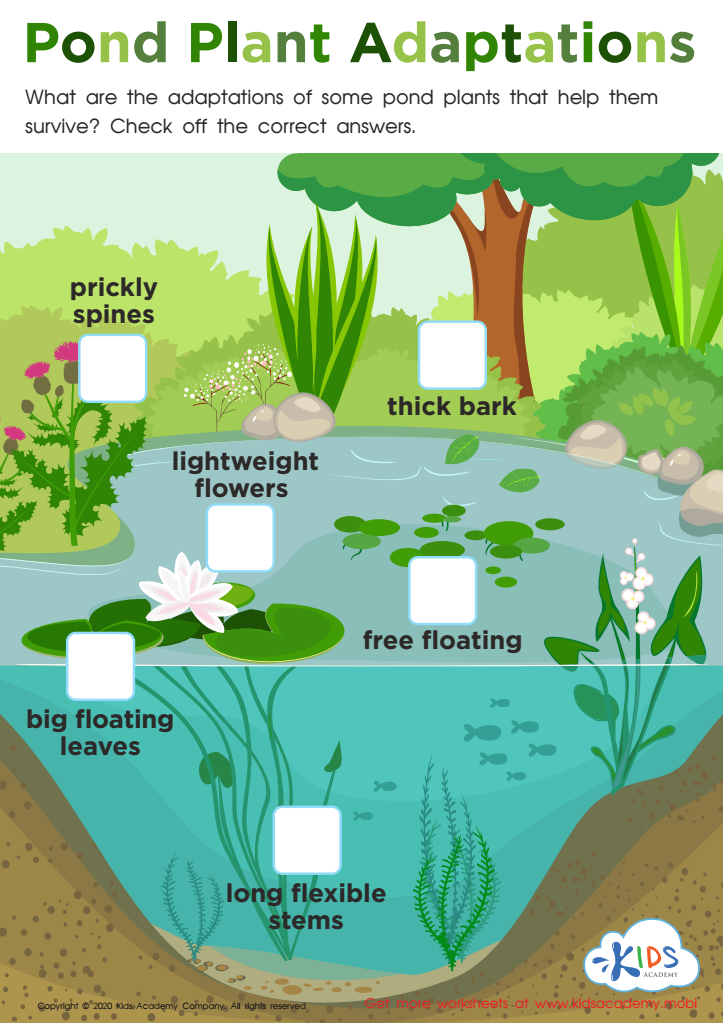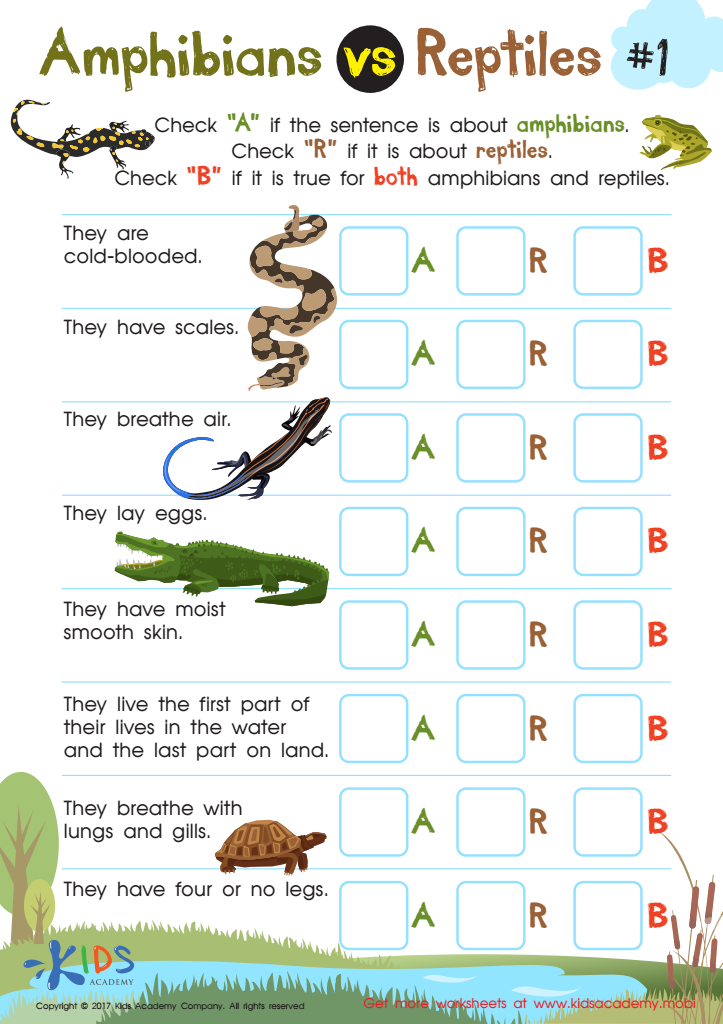Understanding adaptations Worksheets for Kids
2 filtered results
-
From - To


Pond Plant Adaptations


Amphibians vs Reptiles Worksheet
Question/Answer
What does the Understanding adaptations skill mean when it comes to Grade 1 Plants and Animals learning?
The "Understanding adaptations" skill in the context of Grade 1 Plants and Animals learning refers to recognizing how different creatures and plants have special features or behaviors that help them survive in their specific environments. For example, students learn why certain animals have thick fur, or why some plants have large leaves, relating these traits to survival and environmental adaptation.
What are some effective activities to train students’ Understanding adaptations skill when teaching them about Plants and Animals?
Effective activities include creating adaptation matching games where students pair adaptations with the correct plant or animal, holding classroom discussions on how specific adaptations help survival, designing imaginary animals or plants with unique adaptations for specific environments, and outdoor explorations or virtual field trips to observe and discuss real-life examples of plants and animals adapting to their surroundings.
Why is the Understanding adaptations skill important for Grade 1 students?
The Understanding adaptations skill is important for Grade 1 students because it lays the foundation for comprehending how animals and plants survive in their environments. This early introduction to biology nurtures curiosity about the natural world, encourages observational skills, and fosters an appreciation for biodiversity and the interconnectedness of ecosystems, critical for developing informed, environmentally conscious future citizens.

 Assign to the classroom
Assign to the classroom












